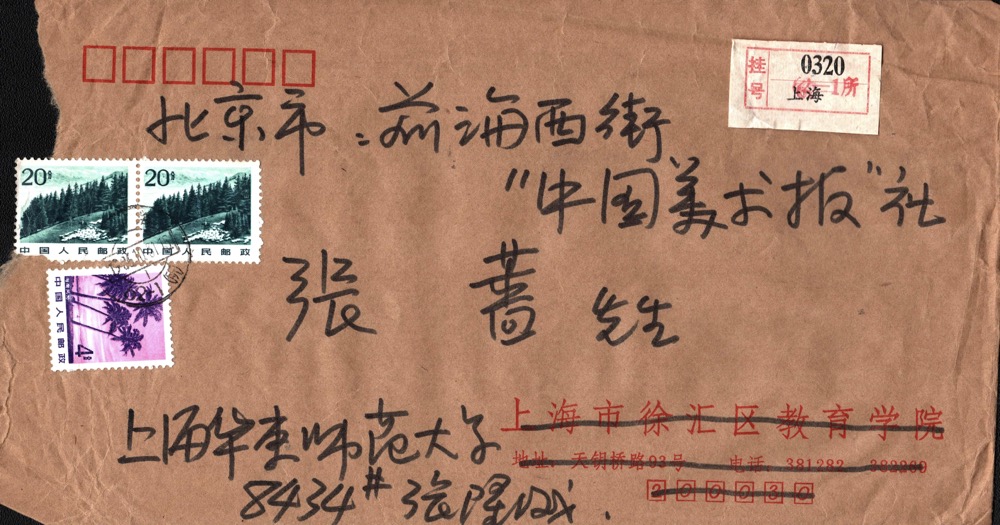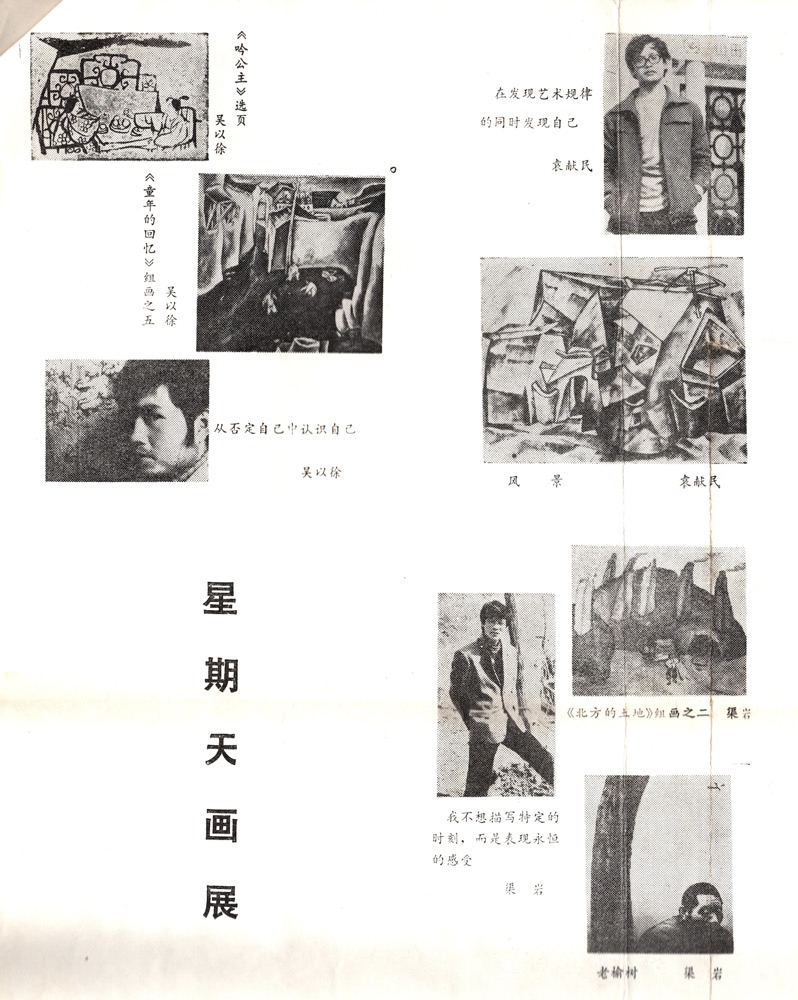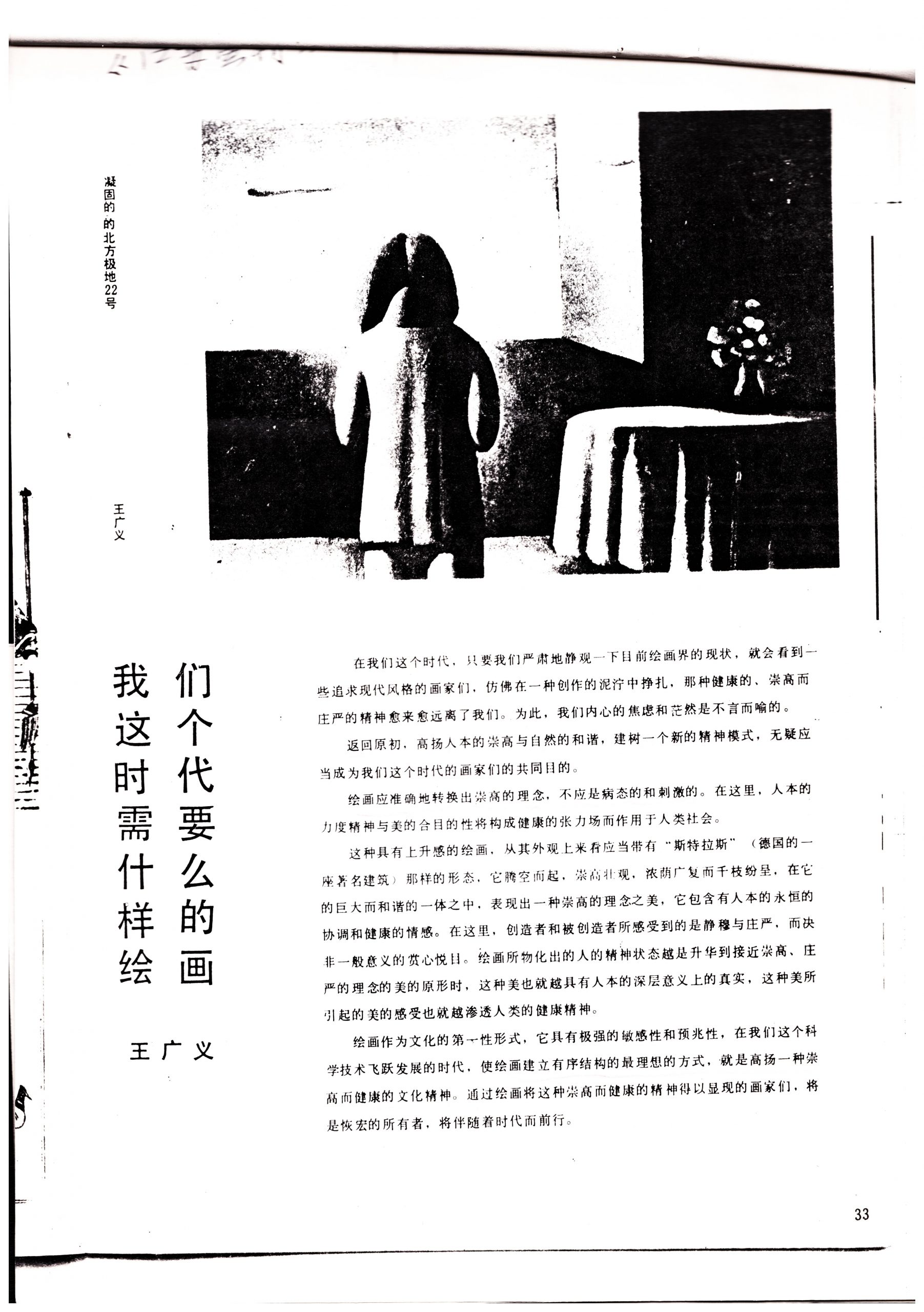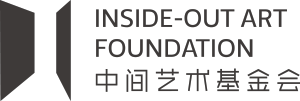
In the context of the Ideological Emancipation Campaign (sixiang jiefang) together with Reform and Opening-up (gaige kaifang) started in 1978, the Cultural Fever (wenhuare) kept going up in the early and mid-1980s. Its accumulation till 1985 and 1986 brought a brief period of active creation and collision of discourse in the art circle. During this period, activities initiated by young creators among the whole country were particularly remarkable. They broke out of restrictions in creation, dared to explore, as well as established groups, held exhibitions, and expressed artistic opinions, turning into a nationally linked “New Wave Art” phenomenon. In the early summer of 1986, Zhang Qiang attended the National Symposium on Art Theory organized by the Chinese Artists Association. During the meeting, he discussed creative activities of young artists and his “nebulous idea” with Suo Fei, the president of Jiangsu Fine Arts Publishing House, which inspired an idea that there should be a book recording changes happened among art circle in recent years. Suo Fei became interested in this topic right away, and invited Zhang to draw up an outline. Two weeks later, he was informed that the topic had been accepted into the publication plan.
Zhang turned to collecting materials and preparing for writing immediately. To this end, he drew two forms: “Survey Sheet for Painting Groups” and “Survey Sheet for Painting Group Member”, and sent letters to groups or individuals who had been reported by Art News of China. He mainly made contact with people in charge of artist groups by asking them to copy forms and distribute to members. Some forms were sent to Zhang directly by artists and some by group representative after gathering. The majority of the materials are preserved in archives, with a few missing. Among existing documents, we found that Zhang received 19 forms filled out by groups and 149 forms filled out by individuals successively between September and November of that year. Some artists also enclosed handwritten letters and pictures of their works in envelopes to supplement content, especially their personal thoughts on art, that were not fully expressed.
Based on these documents and conversations with some of these young artists, Zhang “hardly wrote down these tens of thousands of words” in the first five months of 1987. In June 1988, this book was officially published by Jiangsu Fine Arts Publishing House with a name of “New Tide of Painting”. The first part focused on describing artistic phenomena of this period, and the second part were Zhang’s thoughts on them. 100 pictures of works were appended at the end. This book with less than 150 pages demonstrated his first-hand materials and percipient observation towards the ongoing contemporary art.
As one of the most important historical periods in the 20th century, the retrospection and discourse of the 1980s is a long-standing topic in contemporary academic circle. In the field of contemporary art, understanding of the 1980s overly relies on the value construction of trendy art by direct participants at that time, without historizing these records. The later recounts often encounter subsequent factors. Taking views on “85 New Wave” as an example, they were based on either questions and critical ideas on modernism and pioneering, or perspective of successful people. There were obvious selection of materials or elaborations emphasized on varied aspects, mainly with evident awareness of personal position in the history set by themselves, leading to a veiled but influential historical vision.After thirty seven years, we exhibit this batch of precious documents for the very first time with consent of Zhang. These materials with “primitiveness” restore “original state of things”, allowing people to see the richness, complexity, and limitation of concepts and practices at that time. They also enable us to spot main problems and intentions in a more realistic way, the historic and realistic issues of exploration as well as its innovatory vitality. Meanwhile, we also hope to share Zhang’s methods and attitudes towards art history. Today, his concepts and methods are an illuminated light for us to carry out art history research. Just as Zhang Qiang has said before: “Art history should be an authentic reflection of artist’s practice. ‘Thinking of art’s theory should only be an introspection based on previous artistic creations.’ “
Distribution
Artists
Zhang Qiang (b.1940), from Haimen, Jiangsu Province, was admitted to the History Department of the Central Academy of Fine Arts in September 1960, and after graduating in the summer of 1965, he stayed in the school as an assistant professor of the department. At the beginning of the Cultural Revolution, he experienced the chaotic Revolutionary Networking (chuanlian) and Down to the Countryside Movement (xiaxiang). After the end of the Cultural Revolution, Zhang Qiang actively reflected on the established and old-fashioned theoretical models and devoted himself to promoting the innovation of art research theories. In 1981, Zhang Qiang proposed and co-founded the quarterly academic journal, Art History and Theory with Huang Yuanlin and Xu Shucheng. In the early 1990s, Zhang Qiang moved to Canada, where he lived plainly and looked at the stars. He began writing under the pseudonym of Huishan, and has published three volumes of novels and essays, includingDream of Life, Dream of Travel, and Dream of Awakening, in which he expresses his life experiences and perceptions over the decades, seeking truth and honesty in his heart and courage in justice. He continues to write to the present.
Exhibition Information
Exhibition Date
24th February-30th July, 2023
Exhibition Time
Wed.-Fri. 11:00-18:00
Sat.-Sun. 10:00-18:00
Last Entry
17:30
Exhibition Location
Beijing Inside-Out Art Foundation Zhao Wenliang & Yang Yushu Art Centre, No.50 Xingshikou Road, Haidian District, Beijing
Ticket Price
Regular Ticket: 20 RMB per person
Concession: 10 RMB per person
Concessions applied to the following audience members:
Students and teachers, with student ID and teacher ID.
Language
Chinese, English
Barrier-free Access
We provide barrier-free access. Please make an appointment by telephone in advance. Tel: (010) 62730230
sponsors








